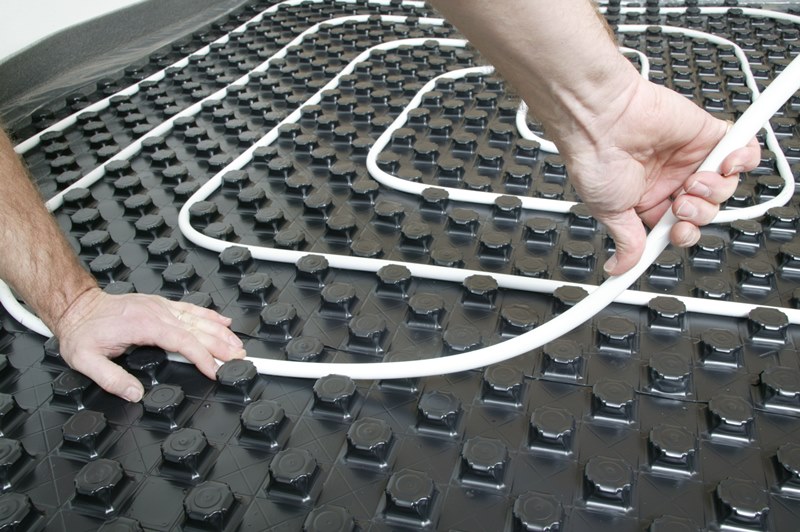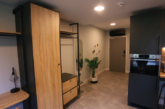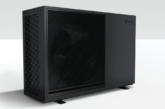
Underfloor heating can be a major selling point for new homes. Nigel Sanger, Divisional Director of Technical Support at JG Speedfit, discusses its ‘hidden benefits’ and provides some tips on designing, commissioning and installing these systems in new houses.
Increasingly desirable for prospective homebuyers, many developers are considering using underfloor heating (UFH) in new homes. These systems have been slowly growing in popularity and are now seen more like a feature of the home, as opposed to just a means of heating a property.
Crunching the numbers shows that this isn’t just a fad. According to AMA Research, the UFH market grew by 6% in 2017 and is forecast to grow by a further 7% in 2018. Rather than being confined to luxury homes for the wealthy, it is now a much more affordable mainstream option.
However, UFH is still relatively new compared to the established technology of radiators. As such, confusion still exists around this system. A survey by Which? showed that 39% of underfloor heating owners believe it cost them more on energy, but 40% say their energy bills stayed the same.
“While UFH’s main selling point is that it can rightly lower fuel bills, developers can also capitalise on other more intangible benefits that UFH offers, which contributes to a healthier home overall.”
Property developers cannot afford to hesitate and miss the boat, but they must also be clear on the value that UFH offers. While UFH’s main selling point is that it can rightly lower fuel bills, developers can also capitalise on other more intangible benefits that UFH offers, which contributes to a healthier home overall.
One of the big reasons to install UFH into new homes and developments is the thermal comfort it can deliver. Like the sun, UFH uses radiant heat to distribute warmth. UFH works by distributing a lower temperature of warm water through a circuit of pipes beneath the finished floor. This heat then rises through the floor and produces a more even temperature for your body and the room.
On the other hand, radiators transfer energy using convection, heating the air above and around the radiator at a much higher temperature. This results in the warm air rising, making the floor the coolest place in the room, while the mass of warm air is at ceiling level.
A conventional radiator can be as hot as 75°C, whilst an UFH system has a much lower and safer surface temperature of between 25-27°C.
UFH is also significantly quieter. There is less creaking of pipes or water flow noise, and it is virtually silent to run.
A room with a view
In a nation where housing shortages and decreasing house sizes are headline concerns, developers should be on the lookout for more ways to increase square meterage and space in their properties.
This is where one of the biggest benefits of UFH really shows. By removing radiators, housebuilders can free up wall space and provide more ‘bang for your buck’ on real estate space – making homes more aesthetically pleasing on the eye.
A healthy choice
One of the less documented benefits of UFH is the way it promotes healthier and safer living. Using radiant heat to heat a room means there is less moisture and lower air movement, which may help remove dust allergens that causes irritation in lungs and in the throat.
UFH is also safer. Removing hot radiators means there are no sharp edges to bump into, nor are there any hot pipes or radiators to accidentally touch.
With traditional radiators and single thermostats, there will be wasted heat. Quite often, not every room needs to be heated in a home, and some rooms may benefit from more or less heat than others. This is not the case when using UFH which can be combined with smart controls to create zonal heating, with individual or multi-room temperature control. Using the JG Aura Smart thermostats, multi-zone heating can be simply and easily achieved.
Design tips
As the UFH market heats up, property developers must be wise to the available options. When specifying UFH systems, always confirm drawings are made using CAD (Computer Aided Design) software, a service which JG Speedfit offers free of charge. This allows any changes in specification to be easily accommodated and made quickly, resulting in less delays to projects. If UFH systems are optional extras that are discussed on a case-by-case basis, CAD Drawings will also convey confidence and professionalism in the service.
Also, look for cost savings through materials. Pipes like JG Layflat, used for installing UFH, come in a variety of sizes and coil lengths. Any leftover pipe can be carried over to the next property or development. With efficient push-fit manifolds, installation is fast and hassle-free, saving on labour time.
Finally, pipes and fittings must be compliant with building and regulatory requirements, while UFH systems must be commissioned and tested accordingly once installed. Manufacturers like JG Speedfit can offer advice and guidance on best practices, all under one roof.










